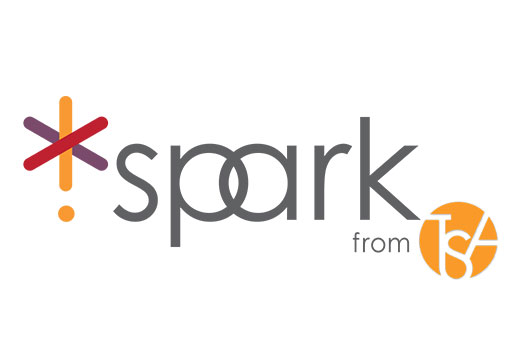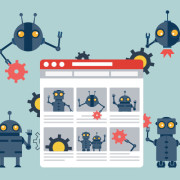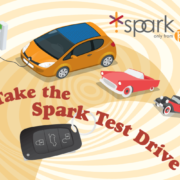Marketing Automation: What is it and why you need it
If you’re in business, “Marketing Automation” is a term that has been getting tossed around A LOT lately. It sounds cool…especially the “automation” part – that has to be a good thing. But what does it really mean, and what does it do?
If you ask around, chances are you will probably get a bunch of circular marketing-speak that will shed little light on the situation, and more than likely confuse you more. To begin, let’s look at a few official definitions gleaned from key players in the MA industry and see if it helps.
“Official” Definitions:
This one is from Marketo, one of the top dogs:
“Marketing automation is a category of software that streamlines, automates, and measures marketing tasks and workflows so that companies like yours can increase operational efficiency and grow revenue faster.”
That didn’t help at all. Sounds good; nice little sound bite, but it doesn’t tell us much – marketing speak for sure. Let’s look at another one:
“Marketing automation is the use of software to automate marketing processes such as customer segmentation, customer data integration, and campaign management. The use of marketing automation makes processes that would have otherwise been performed manually much more efficient, and makes new processes possible. Marketing automation is an integral component of customer relationship management.” SearchCRM
Good grief, that was longer but possibly even worse. I still don’t know what it really is. All either definition has told us is that marketing automation uses software to automate stuff and make it better. Let’s look at one more:
“At its best, marketing automation is software and tactics that allow companies to buy and sell like Amazon – that is, to nurture prospects with highly personalized, useful content that helps convert prospects to customers and turn customers into delighted customers. HubSpot
Now we are sort of getting somewhere. This has some meat on the bone because instead of circular marketing speak they give an example, Amazon. Still fuzzy, though.
Let’s see if we can nail this down a little better:
The Heart of the Matter
Marketing Automation apps and software do all the CMS tasks and processes as referenced in the above definitions (customer data, campaign management, etc.), but it it’s also a cross-functional marketing tool that connects multiple touch points and channels including email marketing, social media and content marketing. A key point of marketing automation is to “nurture” prospects for the long-term; in other words, concentrating on other goals beyond direct sales.
Now we are talking! That makes sense but “cross-functional marketing strategy” sounds a bit complicated to pull off. It CAN be at advanced levels, but the beauty of marketing automation is that is VERY scalable, and it really all starts with an email.
Yes, automated (but not necessarily impersonal) email. No one ever mentions that marketing automation is essentially email-based. That’s what all this talk of “nurturing” is all about. With marketing automation, there are a “whole lotta emails going on.”
Disclaimer: we are NOT talking about SPAM or shady email marketing tactics which has given email marketing a very bad rap. More on that below…
But back on topic. Email is absolutely key to marketing automation. Email:
- Allows you to directly reach audiences 1 on 1, and people tend keep their email addresses for years.
- Now lets you connect with users regardless of what device they’re using. People generally use email addresses to create multiple accounts like Facebook, LinkedIn, Twitter and hopefully even your website.
- Can help you jumpstart your company’s lead nurturing flow – which will also span multiple devices
Mini lecture: email lists and spam:
The best and really only way to determine your marketing automation strategy – and lead pipeline – is to build your database organically. It’s often tempting to just write the check and buy a list, but this is typically a waste of money, can make people mad, get you in trouble and possibly fined by the government – or all of the above.
Instead of buying an email list with recipients who have no idea who the heck you are, glean emails from your existing customer base, or try launching a blog to build your own list internally. Patience is essential.
Remember, when people sign up for your company’s email list on a website or landing page, they’re providing value with their contact information. To get value, you need to give them value – which requires you to make an investment upfront – by producing an ebook or case study, offering a promotion, or even hosting a contest or drawing. This is called Content Marketing. For more on content marketing, visit tsadvertising.com/
Scalability – It’s easy to get started
As mentioned earlier, it all starts with an email, which can be created (along with a corresponding landing page to collect information), sent, tracked and analyzed within the marketing automation software or web-based app.
An excellent entry-level example would be a simple “Thank You” email that is automatically sent after a customer completes a purchase. The email could also have a link to a coupon or promo code for future purchases. This allows continued interaction with the customer beyond the sale…or “nurturing” if you will.
Or a marketing automation campaign can efficiently manage a complex, workflow-based campaign with multiple sales conversion funnels to automatically manage leads, deliver content and alert sales people of activity so they can instantly react or respond.
The point is marketing automation solutions are available for companies of any size. You don’t need huge revenues to get started. The key is to construct foundations early to help your company grow. It’s not a quick magic bullet.
Get help to do it right
It’s important to have a solid foundation in content marketing, brand-building and analytics – or partner with a marketing agency that does. Even though you’re deploying marketing messages, marketing automation is not a “push” mechanism. The most successful companies position their campaigns as “pull” mechanisms. The new paradigm is to draw people in with interesting or educational content, not relentlessly hammer them over the head with the usual sales materials.
One more thing…
It’s easy to start equating marketing automation with software. In reality however, marketing automation is not all about software. It’s also about psychology and the conversion funnel. But those are are topics for another article.
There is WAY more to tell. For more information, contact Jim Bogenreif at Total Spectrum, at 714.637.3600. He is a pretty affable fellow and can give you the 60 second “elevator speech”, a 20 minute overview or a 5 hour dissertation on marketing automation.








